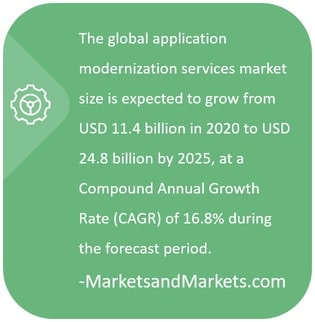


September 22, 2021 Sumit Kothiyal Development , Design ,
As many global organizations are embracing digitalization, the migration of legacy applications to new platforms is a critical move to unlock the full potential of digital transformation. Enterprises run on standard or custom-coded platforms to perform core operations and support other critical business functions. What was built for stability was not built for speed and agility and hence impacts the service delivery models and the customer experience in constantly evolving market dynamics.
As enterprises are moving towards an “on-the-go” model of business operations, the need to overcome the legacy barrier is not just a desirable state but a business necessity. The modernization options such as re-platforming, rehosting, as well as replacement and retirement, will enable better data security and business agility. With more employees working from remote locations, seamless integration of on-premise and cloud solutions is imperative for a user-friendly interface and enhanced performance.
Global organizations that are repositioning themselves as customer-centric, strive to achieve a synergy of technology, process, and people to streamline their service model to forecast customer expectations and provide a superior service experience. The ability to predict the evolving customer preferences and behaviors is a critical competitive edge to retain and acquire a sustainable customer base. This cannot be achieved with the limitations of the legacy systems that hinder connectivity and provide no actionable data.

Despite the changing business landscape and evolving customer preferences, the transition from legacy to modern application platforms presents a multitude of challenges for organizations to tackle –
The business advantages of modernization remain undisputable despite the challenges that exist during the transition. Organizations can overcome these challenges by working with an experienced technology partner with a customizable delivery framework in place.
Business Value
Technical Value
Application modernization is a business requirement for seamless operations and robust business continuity despite the challenges in the transition. Organizations that successfully implement modernization understand the risks and anticipate the challenges before designing the migration strategy. To mitigate the risk of failure, it is imperative to have both business and technology stakeholders actively involved during every stage of the transition to overcome the legacy barrier and realize the true value of modernization. To discover ways in which we're helping enterprises digitally transform and modernize, explore our Application Modernization Services.


Hello, I am Aria!
Would you like to know anything in particular? I am happy to assist you.